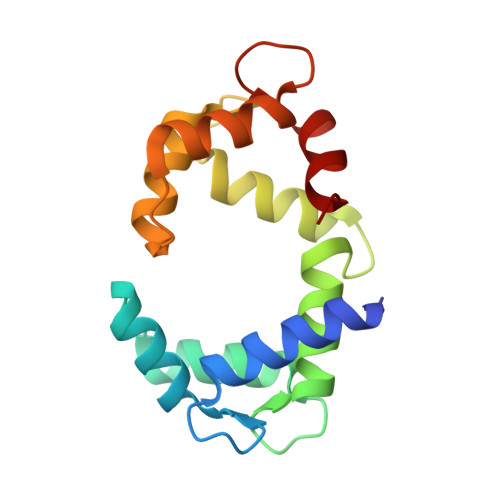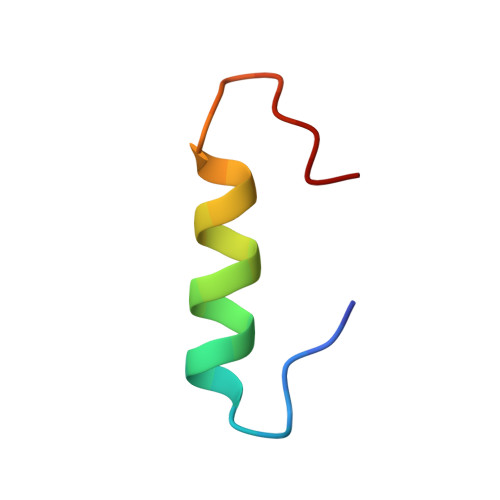Structural Basis for the Recognition of Eukaryotic Elongation Factor 2 Kinase by Calmodulin.
Lee, K., Alphonse, S., Piserchio, A., Tavares, C.D., Giles, D.H., Wellmann, R.M., Dalby, K.N., Ghose, R.(2016) Structure 24: 1441-1451
- PubMed: 27499441
- DOI: https://doi.org/10.1016/j.str.2016.06.015
- Primary Citation of Related Structures:
5J8H - PubMed Abstract:
Binding of Ca(2+)-loaded calmodulin (CaM) activates eukaryotic elongation factor 2 kinase (eEF-2K) that phosphorylates eEF-2, its only known cellular target, leading to a decrease in global protein synthesis. Here, using an eEF-2K-derived peptide (eEF-2KCBD) that encodes the region necessary for its CaM-mediated activation, we provide a structural basis for their interaction. The striking feature of this association is the absence of Ca(2+) from the CaM C-lobe sites, even under high Ca(2+) conditions. eEF-2KCBD engages CaM largely through the C lobe of the latter in an anti-parallel 1-5-8 hydrophobic mode reinforced by a pair of unique electrostatic contacts. Sparse interactions of eEF-2KCBD with the CaM N lobe results in persisting inter-lobe mobility. A conserved eEF-2K residue (W85) anchors it to CaM by inserting into a deep hydrophobic cavity within the CaM C lobe. Mutation of this residue (W85S) substantially weakens interactions between full-length eEF-2K and CaM in vitro and reduces eEF-2 phosphorylation in cells.
Organizational Affiliation:
Department of Chemistry and Biochemistry, The City College of New York, New York, NY 10031, USA; Graduate Program in Biochemistry, The Graduate Center of CUNY, New York, NY 10016, USA.
















